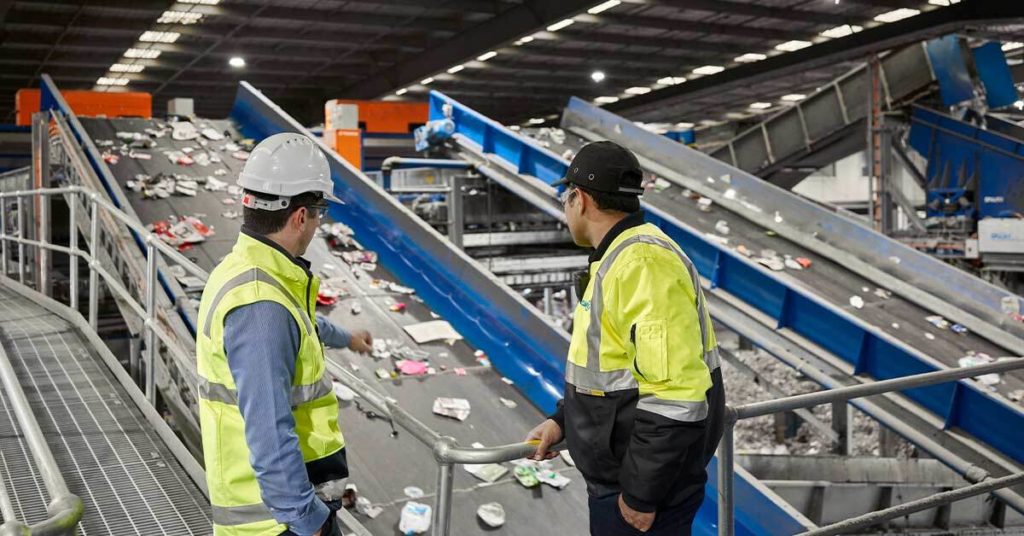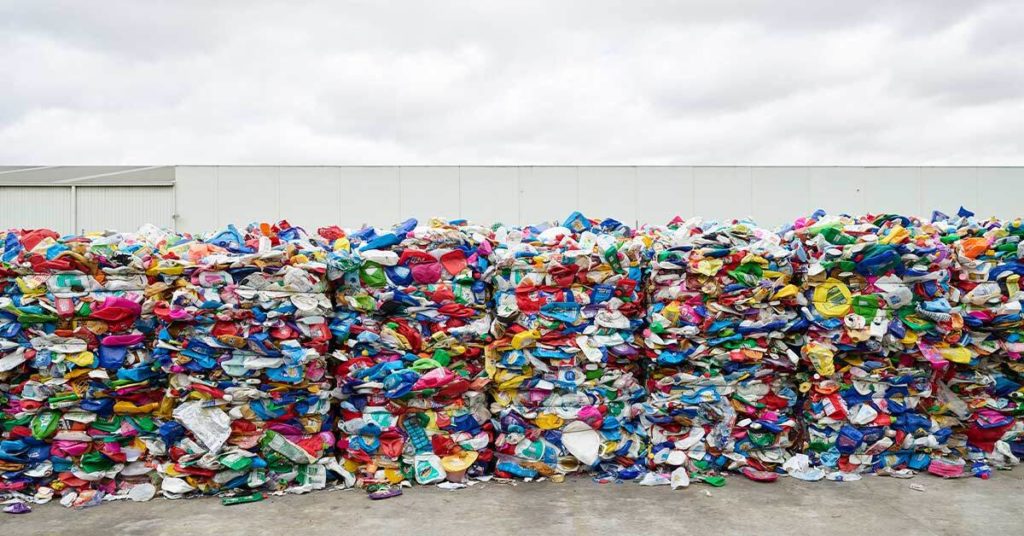Cleanaway’s Plastic Recovery Facility sorts plastic recycling into five different types – which makes it even easier for recyclers to use to make new products.
Cleanaway’s Plastic Recovery Facility sorts plastic recycling into five different types – which makes it even easier for recyclers to use to make new products.
Cleanaway’s Plastic Recovery Facility (PRF), located within the Laverton Material Recovery Facility (MRF), is part of Cleanaway’s Victoria Commingled Resource Recovery (VCRR) network providing sorting and processing capability for councils and businesses across Victoria. The facilities are part of the assets acquired from SKM Recycling in October 2019.
Plastic collected from commercial and municipal recycling is separated from other recyclables such as paper, cardboard, glass, aluminium, and steel at the Laverton MRF before being transferred to the PRF in the same facility for further sorting.

The advanced plastic capability separates the plastic material into five individual polymer grades. The five grades are:
1. PET (Polyethylene)
Examples: Plastic waste bottles, plastic peanut butter jars, plastic detergent bottles
Characteristics: Clear and rigid
2. HDPE (High Density Polyethylene)
Examples: Plastic milk bottles, shampoo bottles
Characteristics: Hard to semi flexible and usually opaque
3. PVC (Polyvinyl Chloride)
Examples: Plastic cordial and juice bottles
Characteristics: Flexible and clear
4. LDPE (Low Density Polyethylene)
Examples: Ice cream lids
Characteristics: Soft and flexible with a waxy surface
5. PP (Polypropylene)
Examples: Plastic yoghurt containers, plastic take-away containers
Characteristics: Flexible and strong

Once plastics are sorted into clean, individual polymers they are baled for sale or input into a pelletising facility.
Sorting plastic into individual polymer grades has huge advantages:
- It retains the value of the commodity. If plastics are mixed or contaminated it reduces the value of the commodity significantly
- Recyclers benefit from pure materials and allows them to produce better quality final products
- No further sorting required, saving time and resources for recyclers who purchase the commodities
The advanced plastic sorting technology allows us to help close the loop on plastic waste, and is aligned with our Footprint 2025 roadmap to ensure Australia has the right infrastructure in place to meet growing waste needs while continuing to improve resource recovery.
Contact us to learn more about how we make a sustainable future possible for communities across Australia.